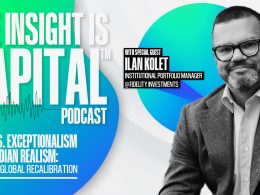by Mohamed El-Erian, PIMCO
Analysts have been feverishly revising down their growth projections. The driver is a string of worrisome data releases out of the US, combined with evidence that other parts of the global economy are also slowing as policymakers tap the brakes (including yesterday evening’s 25 bps hike in Brazilian interest rates).
Lower growth means less room for top line revenue growth, and greater pressure on cost structures that, in many cases, have already been pruned significantly. As a result, both equities and corporate bonds have sold off in a persistent manner.
Meanwhile, Treasury bonds have rallied as the market impact of a more subdued growth outlook has trumped, for now, uncertainties about the debt limit, budget deficit and issuance, and the end of QE2 in three weeks’ time.
Part of the growth slowdown is due to demand and production disruptions associated with the triple tragedies in Japan and Middle East uncertainties. But the causes go well beyond these factors. Despite massive fiscal and monetary stimulus, the US economy (and, critically, the labor market) has frustratingly failed to gain proper traction.
This should not be surprising given the extent of structural impairments — in housing, credit, public finances, and the functioning of the labor market. Each is notable. The four together form a worrisome disrupter to high growth and solid job creation.
The situation in Europe is another factor undermining market sentiment – and it, too, is fueling the “growth panic” that is starting to take hold in certain policy circles.
Agreement on a second massive rescue package for Greece is proving complex, and understandably so. With the economy continuing to contract and unemployment rising, some Greek politicians and large segments of the population are resisting yet another round of painful austerity. Meanwhile, the funders of the bailout are bickering in public, reflecting sharp disagreements on how much burden sharing should be borne by private creditors.
So much for the recent past, how about the future?
Much depends on the effectiveness of policies and, critically, whether there will finally be a more coherent and sustained policy response in systemically important countries (especially the US and Europe).
Policy makers must find a way to reduce uncertainties that inhibit the healthy parts of the global economy from pulling up the less healthy one. And there are quite a few healthy segments — led by most multinationals (with strong profits and remarkably pristine balance sheets that include large cash holdings and prudently termed out liabilities) and emerging economies.
Together, these segments certainly have the wallet to act as a global economic engine. But, unfortunately, there is insufficient will.
It appears that these healthy segments see too much uncertainty to engage in sizeable long-term investments. And now some financial investors are also retreating to the sideline, preferring the option to buy in future rather than today.
To counter both the hesitancy and the trend towards greater “self insurance,” policy makers must get better at understanding the challenges and implementing the appropriate solutions in a timely and proper fashion. It is a question of both content and process.
Structural problems require structural solutions that are adopted within a clearly communicated overall vision; and rather than piecemeal, this should be done in a comprehensive, coordinated and sustained manner.
Until we see this happening, the US economy will not gain proper traction; Europe will face recurrent debt crises; multinationals and emerging economies will be reluctant to fully unleash their considerable purchasing power; and markets will face recurrent headwinds.
Source: PIMCO, CNBC
Copyright © PIMCO, CNBC












